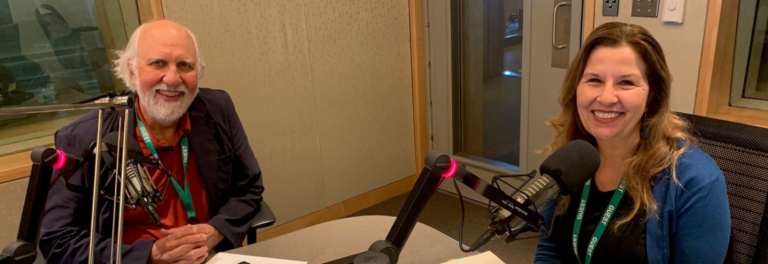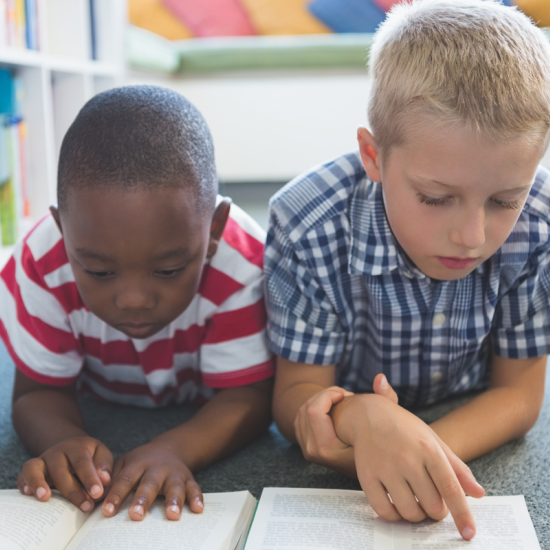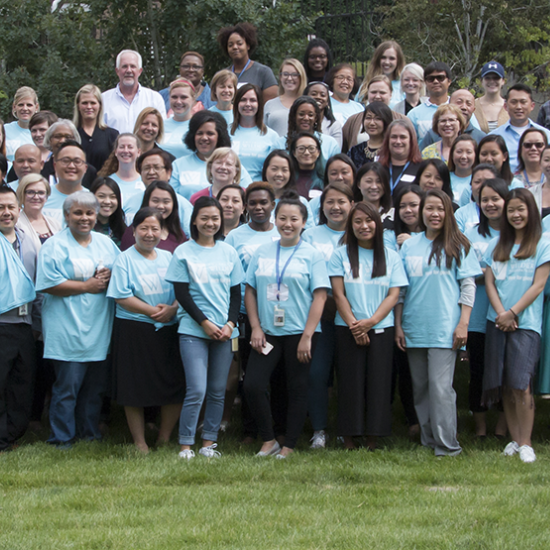Mary Henderson is a caregiver for her wife, who has mild cognitive impairment due to Lewy body dementia. For support, understanding and resources, Mary attends two support groups. In one group, which is specifically for caregivers of people with the disease, Mary feels close to group members, but she’s aware that they see her as different because she is a member of the LGBTQ community.
In the other group, the LGBTQ Caregiver Support Group, held monthly at the Wilder Community Center for Aging, Mary has found caregivers who understand each other on a deeper level than they may find in other areas of their lives. “When we walk in that room, we have something in common with each other that we may not even talk about,” Mary says. “It makes it special for us.”
Support groups and other events are a way for many informal caregivers to share the joys and frustrations as they provide care for an aging or ill family member or friend. At Wilder, for example, events and groups are available for caregivers of people with dementia, adult children who are caregiving for their parents and coffee hour for caregivers who prefer a more relaxed setting. Members of the LGBTQ community have attended all of these groups, but some find benefits from connecting with other caregivers who are lesbian, gay, bisexual, transgender or queer.
Older LGBTQ Adults Often Worry About Discrimination and Access to Aging and Caregiving Services
Between 2010 and 2030, the number of adults age 65 or older is expected to nearly double. As aging members of the LGBTQ community navigate common challenges with aging – such as decisions about housing, medical care and caregiving – they often have additional worries. Social attitudes about the LGBTQ community have shifted dramatically in recent years, particularly among younger people, but older LGBTQ people may not have experienced support throughout their lives and continue to have concerns about discrimination.
- A national AARP survey, Maintaining Dignity: A Survey of LGBT Adults Age 45 and Older, found that ¾ of LGBTQ adults age 45 and older are concerned about having enough support from family and friends as they age. Many were worried about how they will be treated in long-term care facilities and wanted specific LGBTQ services for older adults.
- In 2012, a survey of Twin Cities LGBT older adults showed that less than 20 percent believed they would receive sensitive services if a provider knew they were members of the LGBTQ community.
Support Group Provides Space to Discuss Caregiving Concerns with LGBTQ Perspective
Lisa Albrecht cared for her life partner, Pat, at home for the first 10 years after Pat’s diagnosis with Alzheimer’s disease. For the past three years, Pat has lived nearby in a residence with five other women. Lisa previously helped start a multi-racial support group for LGBTQ caregivers, which ended because of a lack of financial resources. She now co-facilitates the LGBTQ Caregiver Support Group, part of Wilder’s Healthy Aging and Caregiving Services’ work to connect caregivers, reduce loneliness and provide peer support.
Lisa says the group members sometimes discuss situations more commonly faced by the LGBTQ community, such as the effects on finances of caregiving for a spouse as a married person versus caregiving for a life partner without marriage. Most of the time, though, the group’s conversations are similar to those of other groups. “It’s not like our lives are that dramatically different – caregiving is exhausting and time consuming,” Lisa says.
At Wilder’s LGBTQ Caregiver Support Group, caregivers have a place to share their experiences with others who understand them more fully. “It’s a space where we can share funny stories and sorrow and joy and know that the people in the group can understand at a very intimate level,” Lisa says.
Catherine Engstrom, a social worker for Wilder Healthy Aging and Caregiving Services, contributed to this blog post.
“When we walk in that room, we have something in common with each other that we may not even talk about. It makes it special for us.”




